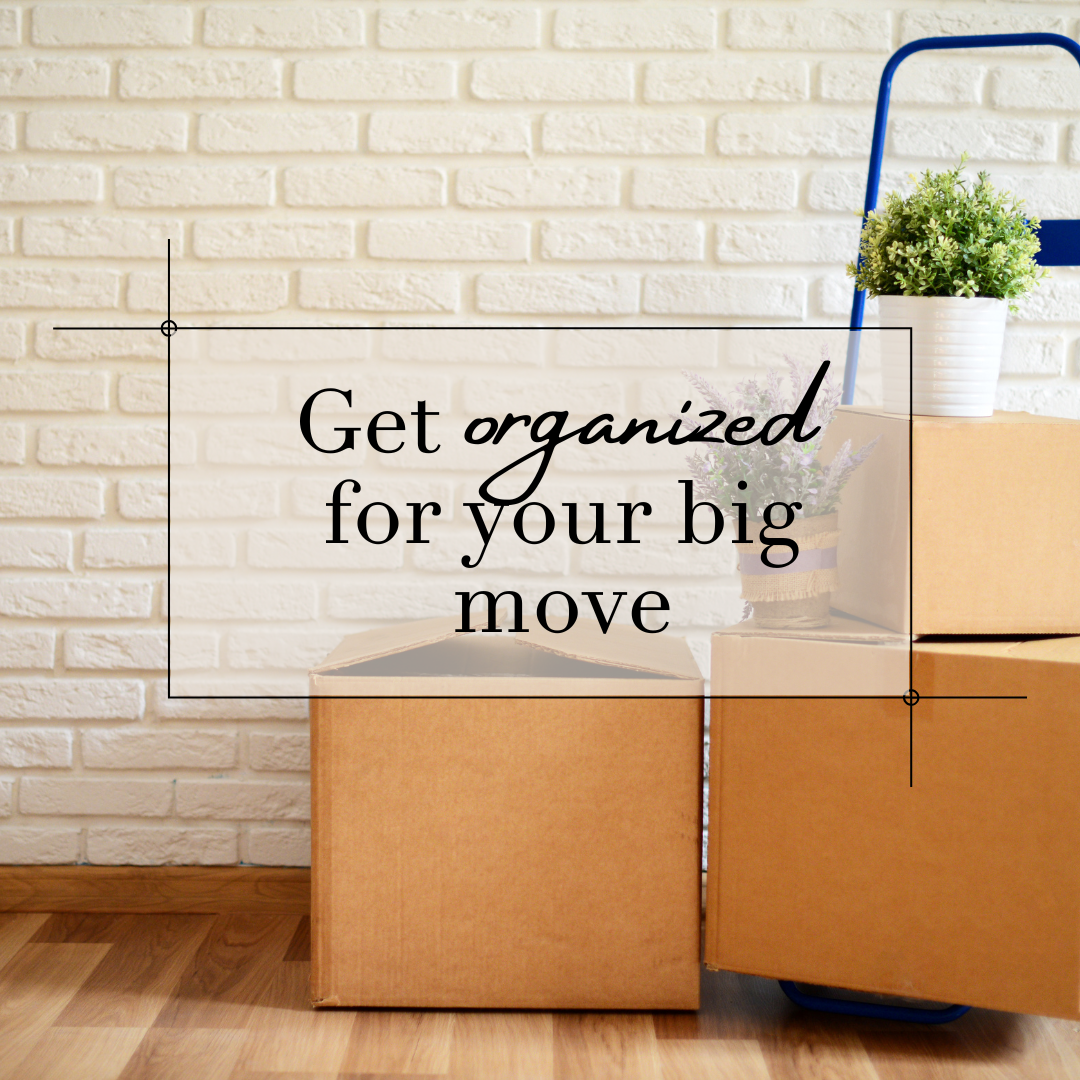
This series, Love Selling Your Home: Minimize Your Stress, Maximize Your Profit, is a step-by-step guide that covers everything you need to know to sell your home in today’s market, from finding a real estate agent to all the way to possession day.
You’ve got mixed feelings about moving right now -- excited to make new memories in a new home but somewhat sad to be leaving your old home. No matter what, you’ve got to get organized and focused for your big move and all the details it entails.
Here are some ways to help you NOT feel overwhelmed leading up to your move (and your settlement day). Doing some preparation months or weeks ahead can make a huge difference in the final days, so keep that in mind when you first list your home.
Find an organization system that works for you. Whether you create an “old-school” binder or find an online app that can keep you on track, take the time to stick to a system and use it. It can be a great way to stay organized and have all your information in one spot. Keep your estimates, receipts, check lists, phone numbers, and even an inventory of items being moved. This can relieve a lot of stress during the entire process.
Go through ever room to sort and purge. Basically, don’t move things that you don’t use or want anymore! Moving should force you to throw things out or donate or recycle. However, you really should make some headway on this BEFORE you put your home on the market. A clutter-free home has more appeal to buyers.
Don’t forget to dispose of any toxic or hazardous materials you may have lurking in your garage or basement. Check online to see where these can be disposed.
For those items you will keep, make a list of what needs special packaging or extra insurance coverage for the move. What about any large paintings or fragile pottery?
Research movers and get quotes to compare costs. Ask friends and family first about reliable movers they have used recently. Do not rely on a quote over the phone since you should request an on-site estimate. You’ll also get an idea of how long it will take to pack up your home and move it to the truck. Are you in a condo building and have to use the service elevator or in a townhome with no parking close to your home?
About a month or two before the move, select a company, confirm the date and arrival time, all costs, both addresses, and any details so you avoid any confusion during the actual move.
Get supplies for the move. If you aren’t receiving boxes from a moving company, ask around for some to reuse or order new ones. Also make sure you have a stocked supply of tape, bubble wrap, and permanent pens if you plan to pack yourself. Don’t forget you can even go green by using towels, sheets, and blankets to protect items. Your mover may be able to supply wardrobe boxes and dish barrels but double check.
Let others know you are moving and provide new address or cancel services. Set up mail forwarding online with Canada Post with your new change of address.
Also directly contact others to cancel their services or to let them know your new address if you’re continuing their services. This can include vendors for your lawn care, pest control, pet walker, newspaper delivery, house cleaners, gym, swimming pool club, etc.
Notify any health professionals about your move and new address. Depending on how far you move and if you will continue to be a patient, you may need to have any medical records transferred or forwarded to a new health care provider. Also contact your pharmacy with your new address, and refill any prescriptions as necessary so you don’t run short the days around the move.
Don’t forget about notifying your banks and other financial institutions, your credit card and insurance companies, broker, employers, etc.
If you have children, make sure their school records are sent to the new school district.
Have a plan when packing your items. First, pack things that you don’t use as frequently and go from there as you get closer to the moving day. For example, are there certain toys your kids don’t use all the time? Are there items already stowed away such as crystal glasses and china that you don’t plan to take out anytime soon? Get them in boxes now!
Also make sure you pack one or two boxes with essentials that you will need right away when you move into your new home. Keep track of these boxes!
Items such as expensive jewelry or important files should be moved to a secure box that you can move personally, if possible.
A few days before the move, pack some suitcases with clothes, shoes, and personal items you will use during the first few days in your new home. Don’t forget shampoo, your toothbrush, and any prescription or over-the-counter drugs. Even if you’re not going cross-county and just heading down the road, plan like you’re going on a trip. Plus, why not use those suitcases, since you need to move them anyway!
Label your boxes. Yep, it’s that simple but very important. Label what is in the box, what room it is going into, and even give it a number. This can help you keep an inventory of your belongings and let you know if you’re missing a box or not. Some people take pictures of items in boxes and store for reference later on.
You also can use color coded labels if you want to be even more organized. Maybe red labels could mean there are items you need soon after you move in rather than a box that can be unpacked much later.
Plan to have someone in your family onsite supervising the move. Always verify that it’s the correct truck and company. Meet with the supervisor to go over the details of the contract, which should have an inventory list.
Keep a copy of any signed documents and don’t forget to exchange cell numbers! Also, it’s nice to tip and provide refreshments to the movers who will be working hard all day for you.
Scope out your new home. If your new home will be vacant before you move, you may be able to get in to measure the room sizes to see how furniture will fit or not. You can also spend time picturing how you want to set up the rooms so you know where to tell the movers to move certain pieces of large furniture or artwork.
If there’s even more time between moves, an empty house is easier to paint or refinish floors if that’s the plan.
Leave your home clean and tidy. Don’t leave a mess for the new homeowners or any garbage. You don’t legally have to hire a cleaning service to make it spotless unless it was an agreed upon term in your purchase contract.
However, you have loved this home so make them feel welcome and relieved when they arrive. Leave your old home the same way you would want to find your new home that day. The new owners may get some mail of yours or packages, so keep it friendly and cordial.
Don’t worry, as your agent, I’ll help you make sure you have everything you need when it comes to this stage of the process.
Stayed tuned for next week’s last article! How to Make Settlement Day a Success will help you plan for a glitch-free day and give you a rundown of what to bring and what to expect for the meeting.
